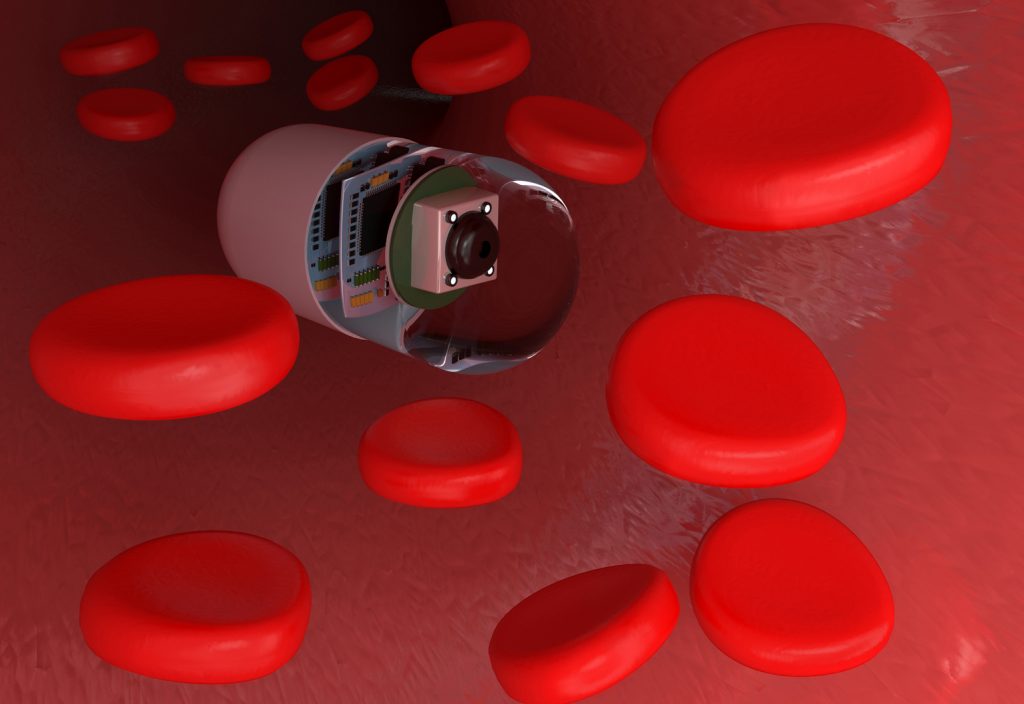Pacemakers and other implantable medical devices need on-board batteries, which limits their miniaturisation and lifespan. Devices powered and controlled by ultrasound or radio frequency waves could be a medical game changer.
A research collaboration between MIT’s Media Lab, and medical scientists from Harvard Medical School and Brigham and Women’s Hospital has recently developed a new method to wirelessly power and communicate with implanted medical devices.
The devices tested by MIT were about the size of a grain of rice, but the researchers hope to make them even smaller.
According to research co-author Assistant Professor Giovanni Traverso from Brigham and Women’s Hospital, the ability to communicate with the devices without the need for a battery would be a significant advance.
“These devices could be compatible with sensing conditions as well as aiding in the delivery of a drug,” Traverso said.
Traverso is using the research as a basis to develop ingestible devices to administer medications, check vital signs and monitor the gastrointestinal tract.
The researchers also said their technology could help improve the distance for object tracking and communication in radio frequency ID (RFID) applications such as inventory control or retail analytics.
Power on the airwaves
The implants developed by MIT are powered by radio waves, which can be safely transmitted through the human body.
To overcome the obstacle of the radio waves losing power as they pass through tissue, the researchers set up an array of antennas outside the animal test patients that transmitted waves at different frequencies in a process they named ‘in vivo networking’ (IVN).
Senior research author Assistant Professor Fadel Adib from MIT’s Media Lab said the team chose frequencies that were only slightly different from each other. As waves travel through the body, they overlap and combine.
“When they reach their highs at the same time, they are able to overcome the energy threshold needed to power the device,” Adib explained.
This method delivers power to a wide area of the body, which means several devices can be powered at once, and their exact location does not need to be known.
The researchers successfully powered sensors implanted 10 cm inside the body from up to a metre away. For sensors close to the skin’s surface, the distance could be increased to 38 m.
As well as power, the radio waves delivered a signal instructing the sensor to relay information to the antenna. This signal could be modified to initiate the release of a dose of medication. It could also prompt the delivery of an electrical charge or light pulse in devices implanted in the brain to treat conditions such as epilepsy or neurological disorders.
“Even though these tiny implantable devices have no batteries, we can now communicate with them from a distance outside the body. This opens up entirely new types of medical applications,” Adib said.
The research paper will be presented at at the Association for Computing Machinery Special Interest Group on Data Communication (SIGCOMM) conference in August, and the team are working to improve the efficiency of power delivery and distance of transmission.
Toxin-fighting nanorobots
On an even smaller scale, researchers at the University of California San Diego (UCSD) have developed ultrasound-powered nanorobots about 25 times smaller than the width of a human hair that could help rid blood of toxins and bacteria.
The nanorobots are made up of gold nanowires coated in a mixture of membranes from red blood cells and platelets.
The bio-coating binds pathogens (such as antibiotic resistant MRSA bacteria) and absorbs and neutralises the toxins bacteria produce, and the gold wires respond to ultrasound, which powers them to ‘swim’ at up to 25 micrometres per second to speed up detoxification. The cell-coating also protects the nanorobots from biofouling.
The research, recently published in Science Robotics, brings together innovative nanorobotics and biotech technologies developed in the nanoengineering and engineering departments respectively.
Professor Joseph Wang, who developed the technology to coat nanoparticles in cell membranes, said integrating natural cell coatings with synthetic nanomachines can give tiny robots the ability to remove pathogens and toxins from bodily fluids.
“This is a proof-of-concept platform for diverse therapeutic and biodetoxification applications,” he said.
The work is in the early stages, but has shown promising results. MRSA-infected blood samples treated with the nanorobots had three times less bacteria and toxins after five minutes than their untreated counterparts.
After further testing and investigation of biodegradable materials to replace the gold nanowires, the researchers hope to adapt the technology to remove bacteria and toxins from a range of bodily fluids.

